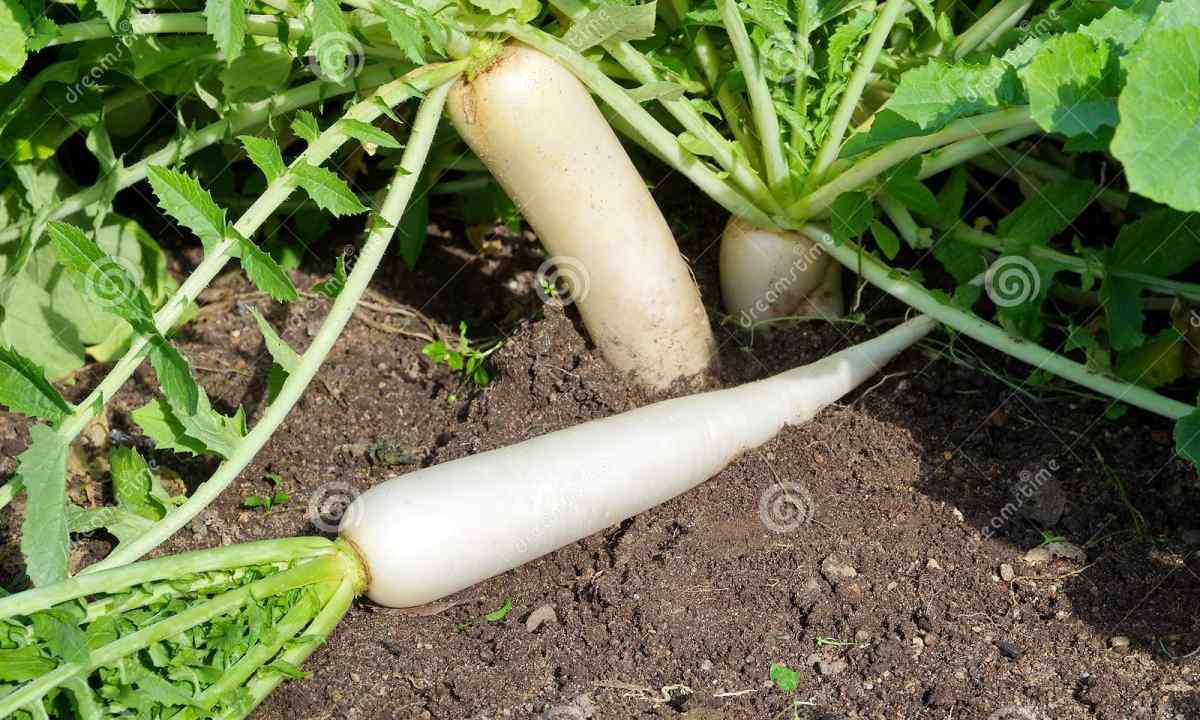Daikon or the Japanese radish – root crop, useful to healthy power supply, which is very popular in the Asian countries. Also macrocells – potassium, magnesium, copper and iron are part of its pulp necessary for human body micro. The ripe root crop is used for preparation of various salads, marinades and pickles, also it can be used fresh.
Taste at daikon gentle, without bitterness. Root crop very juicy. In good summer the vegetable growers collect up to ten kilograms of the Japanese radish from square meter. Daikon is well stored and keeps the fresh qualities up to five months after harvesting.
How to plant the Japanese radish?
For a start it is necessary to decide on time for crops. It is the best of all to plant daikon in the early spring or on end of hot July.
On landing time and formations of root crop the daylight hours should not exceed 10-12 hours. Optimum soil temperature is not below 10-15 °C.
Before landing it is necessary to prepare soil. The earth has to be soft, friable, fertile and humidified. Compost and dry cow manure well will be suitable for fertilizer of future bed.
When landing by seeds, before the procedure it is necessary to prepare them for it.
It is necessary to warm up seeds in warm water (50 - 60 °C), then to cool in ice water and to store in the fridge day before landing. You should not plant seeds closely to each other. Growth of root crop which can have 7 - 10 cm diameter will require enough space. In hole 2 - 3 seeds are put. Distance from one hole to following – 30 cm, between ranks – 60 cm.
Care for landings
Daikon needs regular watering, weeding, loosening and fertilizing by fertilizers.
Because of insufficient watering the ripened root crop can become rigid and bitter on taste. Pereuvlazhnyat soil is not necessary too if there are rains, then it is possible to refuse artificial watering. At weather, normal, comfortable for plants, the watering is made at least, than every five-day week. From moisture surplus the Japanese radish becomes soft, becomes covered by dark stains and begins to decay.
Processing from wreckers
The site should be strewed with large ashes to avoid emergence of cabbage midge and slugs. Red pepper tincture will help against other insects, and it is possible to get rid of larvae by means of weak solution of potassium permanganate.
Harvesting and storage
Pick the Japanese radish in two and a half months after landing. It is impossible to overdo daikon in the earth as elevated part of plant can blossom and lose useful and tastes. Harvesting is appointed to clear, dry day.
From the easy and soft soil the root crop is pulled out for tops of vegetable, from heavy – dug out shovel. Strong vegetables display along bed and dry within several days.
Then fruits clean from tops of vegetable and the earth, put in boxes so that separate copies did not adjoin with each other. It is the best of all to store the Japanese radish in cellar at temperature no more than 5 °C.
